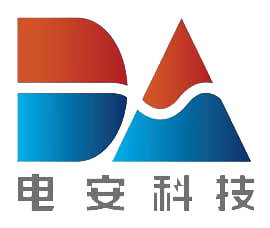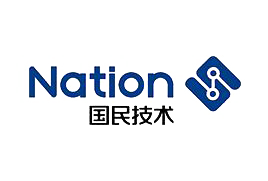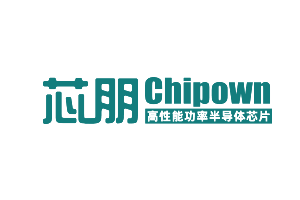
 Release time:2023-03-21
Release time:2023-03-21
 Viewed:9418 times
Viewed:9418 times
Currently, the semiconductor cycle is declining, and multiple segments of the semiconductor industry chain are clearly entering the inventory adjustment cycle. However, driven by the significant increase in demand for the two mainstream applications of electric vehicles and solar photovoltaic, IGBT (Insulated Gate Bipolar Transistor) has recently experienced a significant shortage. Not only has the price increased continuously, but the industry has described the shortage as "not a matter of how high the price is, but simply not being able to buy".
IGBT supply is in short supply, and OEM prices are soaring
Since the automobile core shortage in 2020, the structural core shortage of automobile chips has become increasingly evident, and IGBT has been in a tight state. In the second half of 2022, it even surpassed the automotive MCU and became the biggest constraint affecting the expansion of automobile production.
At the beginning of this year, media reports showed that Hanlei Group raised the OEM price of IGBT production line by about 10% at the beginning of the year. It is reported that Hanlei has a large order from Infineon, the leader of IGBT chip components. At a time when the quotation for wafer foundry has generally been revised back, Hanlei Group has bucked the trend to increase prices, highlighting the hot market situation.
According to the "2023 Q1 Chip Market Report" released by Fuchang Electronics on February 17, 2023, the delivery dates of the IGBT Q1 of the five major brands ST (Italian French Semiconductor), Microsemi (Meigao Senmei), Infineon (Infineon), IXYS (Essex), and Fairchild (Fairchild Semiconductor) are basically consistent with the delivery dates of the Q4 of 2022, and the delivery dates are still tight, with a maximum of 54 weeks.
Specifically, in the first quarter of 2023, ST's IGBT lead time was 47-52 weeks, Microsemi's IGBT lead time was 42-52 weeks, IXYS's IGBT lead time was 50-54 weeks, Infineon's IGBT lead time was 39-50 weeks, and Fairchild's IGBT lead time was 39-52 weeks. However, the lead time and price trends of these five major brands are stable, with no upward trend.
Recently, industry insiders have talked about the phenomenon of IGBT shortage, stating that "increasing prices to grab goods is no longer a new thing, not a matter of how high prices are, but simply unable to buy them." Their analysis shows that this wave of shortage will continue for a while.
According to the analysis of the industry, there are two main reasons for the large shortage of IGBT. One is that the proportion of solar inverters using IGBT has increased significantly, and the other is that the semiconductor industry is currently in a period of adjustment. Not only is the capacity limited, but many capacity has been taken away by electric vehicle factories, resulting in a large shortage of IGBT under the crowding out effect.
With the rise of new energy vehicles, the demand for high voltage has greatly increased, and IGBT has become the focus of industrial development. The number of IGBTs used in an electric vehicle is up to hundreds, seven to ten times that of traditional fuel vehicles. In industrial applications, there are green power applications such as AC servo motors, frequency converters, wind and solar power generation, and in the high-voltage part, there are rail transportation and power grid applications such as high-speed railways.
After IGBT, SiC becomes the next air outlet for automotive semiconductor manufacturers
Currently, SiC power components are a major technology relied upon by electric vehicles to achieve performance success. Vehicle manufacturers are scrambling to bind SiC supply in the coming years, including IGBT suppliers.
Gong Ruijiao, an analyst at Trend Force Chibang Consulting, pointed out that silicon carbide has superior electrical properties that traditional silicon materials cannot match. Replacing silicon based IGBTs with silicon carbide is an irreversible trend, especially under the 800V charging architecture, silicon based IGBTs have reached the performance limit, making it difficult to meet the technical requirements of the main drive inverter. From the perspective of downstream applications, silicon carbide components are the core components that electric vehicle manufacturers must consider in the future. In addition, the introduction of photovoltaic energy storage scenarios is also accelerating. Therefore, in recent years, the silicon carbide market will maintain a trend of oversupply, and the industry heat will not decrease.
According to the latest research report released by TrendForce Chibang Consulting, with the increasing number of cooperation projects with automotive and energy companies such as Ansemy and Infineon, the top two applications of silicon carbide power devices are in the field of new energy vehicles and renewable energy, respectively reaching $1.09 billion and $210 million in 2022, accounting for about 67.4% and 13.1% of the overall market value of silicon carbide power devices. By 2023, the overall market output value of silicon carbide power devices will reach 2.28 billion US dollars, with an annual growth of 41.4%.
TrendForce Consulting predicts that by 2026, the market output value of silicon carbide power devices is expected to reach 5.33 billion US dollars. Mainstream applications still rely heavily on electric vehicles and renewable energy, with the output value of electric vehicles reaching 3.98 billion US dollars, with a compound annual growth rate of about 38%; Renewable energy reached $410 million, with a compound annual growth rate of about 19%.
Currently, IGBT is mainly dominated by large factories in Europe and Japan, with Infineon accounting for the highest market share. In addition, Japan's Fuji Electric, Ansemy Semiconductor, Toshiba, and Italy France Semiconductor are also major suppliers. These large factories have increased their SiC layout in recent years.
Infineon
In 2023, Infineon will focus on SiC, BMS, and MCU to expand the market.
On February 16th, it announced that it would invest 5 billion euros to build a 12 inch wafer factory in Dresden, Germany. It is reported that the new analog/mixed signal technology and power semiconductor factory is planned to be put into production in 2026, and its analog/mixed signal components and power semiconductors will be mainly used in automotive and industrial applications.
Renesa Electronics
In terms of Ruisa Electronics, last May, it announced that it would invest 90 billion yen in the Jiafu factory (Jiafei City, Yamanashi County) that was closed in October 2014, with the goal of restoring its 300mm power semiconductor production line by 2024, producing products including IGBT and power MOSFETs.
In August 2022, Reza Electronics announced that for the next generation of electric vehicle inverter applications, AE5 generation IGBT products will begin mass production on the 200 mm and 300 mm wafer lines of Reza's Nago factory in Japan in the first half of 2023.
Italian semiconductor
Italy France Semiconductor announced last October that it would build a 730 million euro silicon carbide wafer factory in Italy. It is reported that this will be the first factory in Europe to mass produce 150mm SiC epitaxial substrates, integrating all steps in the production process. Looking ahead, ST is committed to developing 200mm wafers in the future.
Ansemy
On February 11th, Ansemy officially took over a 12-inch factory in New York and promised to invest $1.3 billion in it. Ansemy said that the factory will produce chips that support electric vehicles, electric vehicle charging, and energy infrastructure, which will enable the company to accelerate growth in the general trend of automotive electrification, ADAS, energy infrastructure, and factory automation.
Hassane El-Khoury, the CEO of Ansemy, pointed out that in the next three years, Ansemy will provide SiC with a committed revenue of $4 billion, up from about $1 billion in 2023, and may increase by about 30% in 2024 and 2025 to reach $1.7 billion. In order to achieve its goal, Ansemy has doubled the capacity of its wafer factories that produce SiC, and plans to double it again in 2023, and then double it again in 2024.
As IGBT suppliers continue to add SiC to alleviate the current shortage of power semiconductors, the introduction of new technologies will bring a new experience to the power semiconductor market.
Note: The source and copyright of the text belong to Global Semiconductor Watch, and Jurmay Technology is only for reproduction and sharing.











































